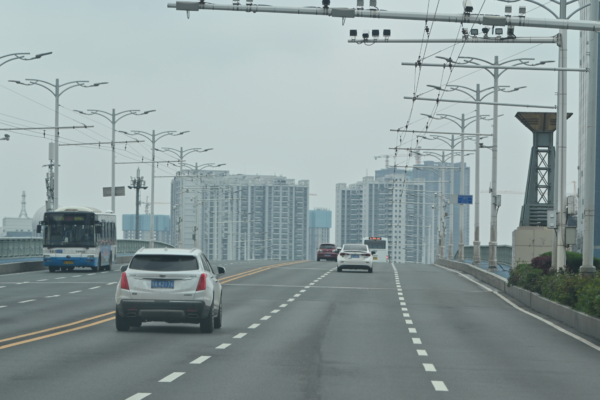After the outbreak of the pandemic in China and against the backdrop of a continued economic downturn, the era of “free” highways seems to be dwindling. Recently, local governments in China have started to restore or construct toll booths on national highways, sparking widespread social concern.
The Shandong provincial government website recently released an approval regarding the establishment of toll booths on the Jinan Yellow River Bridge, with a tolling period of up to 25 years. Specific toll standards and operating hours will be determined by relevant departments of the provincial government and announced separately for implementation.
Prior to this, both Jilin and Hubei provinces have initiated toll collection on national bridges and primary highways, indicating that the reintroduction of tolls on highways is not an isolated case. Faced with this change, the public inevitably wonders, “Are tolls on highways making a comeback?”
In fact, the gradual elimination of tolls on ordinary roads began in 2009 in China, with a reduction of toll roads by 150,500 kilometers and the closure of 2,681 toll booths.
However, amidst the three-year pandemic lockdown imposed by the Chinese Communist Party, coupled with the sustained economic decline, the prevalence of “free” roads seems to be diminishing.
According to incomplete statistics, provinces such as Anhui, Gansu, Hubei, Jilin, Shanxi, and Jiangsu have all issued announcements since 2021 regarding the opening of toll booths on national highways. Over the past few years, at least 10 new toll booths have been established nationwide.
This development implies that once currently toll-free national and provincial roads resume toll collection, it will inevitably raise highway transportation costs, adding to logistics expenses. Furthermore, the reinstatement of tolls on national and provincial roads will also negatively impact the development of local cultural and tourism industries.
According to publicly available information, national highways refer to major trunk roads with national political and economic significance. China categorizes roads into five grades: expressways, primary roads, secondary roads, tertiary roads, and quaternary roads. The majority of national highways in eastern China are primary and secondary roads, while those in central and western China are largely secondary roads or below.
Regarding the reports on the resumption of toll collection on national highways, many netizens have commented, questioning why toll booths are being set up on highways when road maintenance fees are already included in fuel costs. Some expressed frustration at what they perceive as a continual burden on the common people, questioning why the benefits of the nation cannot be extended to citizens.
On September 2, an article published by ifeng.com raised concerns about the trend of reinstating tolls on national highways. The piece referenced promises made prior to the introduction of fuel taxes, assuring the public that toll booths on national highways would be completely removed once the fuel tax was implemented. The author of the article emphasized that with the implementation of the fuel tax, the public had already assumed the burden of road maintenance costs through taxation, suggesting that all tolls, including those on expressways, should be abolished to ensure fairness and avoid double billing. The resurgence of toll booths on national highways across several provinces within just a few years is a worrying signal.
The article further highlighted the impact of the downturn in the real estate industry, noting that while land sales used to provide easy revenue in the past, the current landscape with declining property markets has put a strain on local finances. The increasing length of toll-free highways juxtaposed with the financial constraints faced by local governments has led many regions to boldly reintroduce tolls on national roads. This situation raises concerns about potential emulation by other regions and the subsequent effects on the economy and people’s livelihoods, painting a grim picture for the future.

